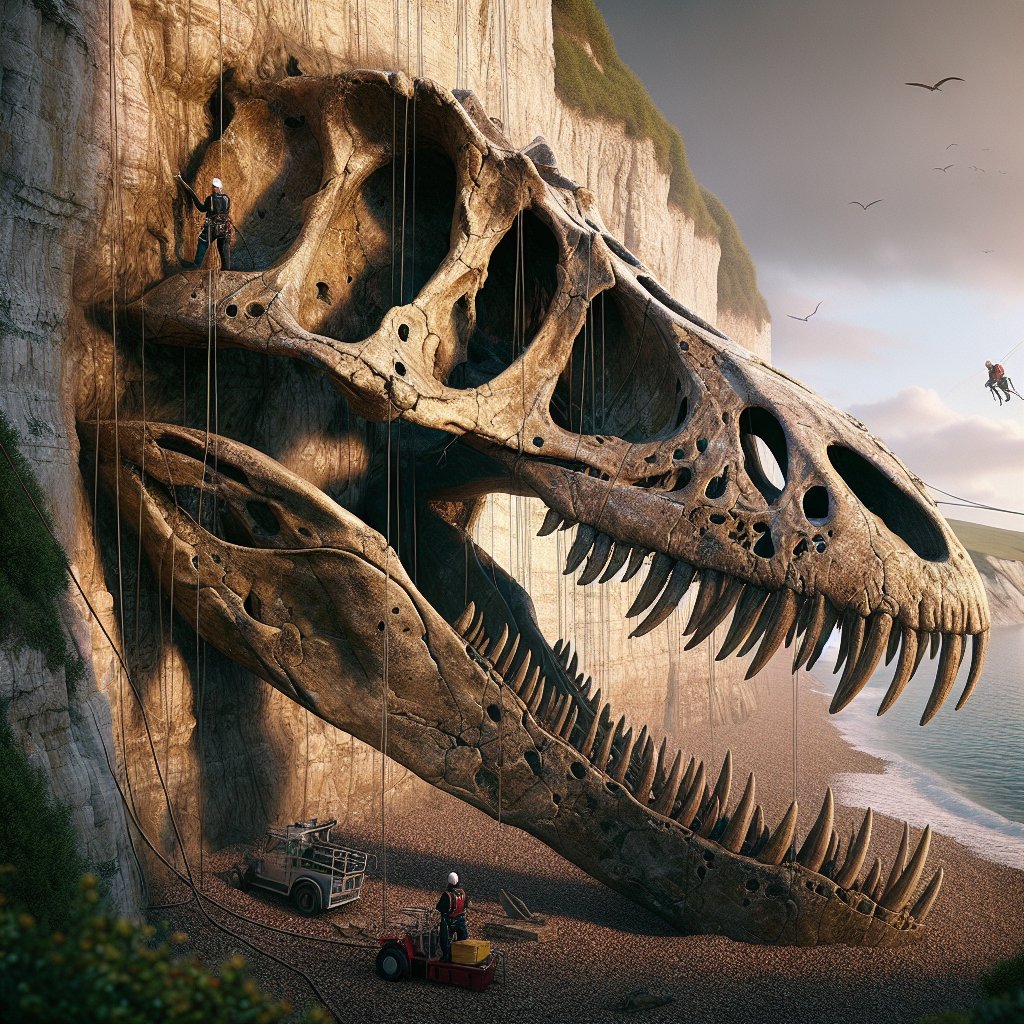Content created by AI
Prehistoric Behemoth Unearthed: The Pliosaur of the Jurassic Coast
In a ground-breaking paleontological find, the skull of a colossal sea creature has emerged from the storied cliffs of the United Kingdom's Jurassic Coast, specifically in Dorset. The fossil, which belongs to the pliosaur species, is igniting the scientific community with fresh insights into these ancient beasts that ruled the oceans approximately 150 million years ago.
The stunning find, encapsulating a 2-meter-long skull, is heralded as one of the most complete pliosaur specimens ever discovered. Its significance was underscored on a special David Attenborough program on BBC One, captivating an audience eager to delve into Earth's prehistoric marine life.
Local paleontologist Steve Etches, who toiled with this formidable specimen, emphasizes its rarity and impeccable preservation. The fossil reveals a well-connected jaw, a rare characteristic in paleontological finds, where often, bones are missing or disjointed. However, this particular skull, resplendent with all its bones, albeit slightly distorted, suggests the sheer magnitude of the pliosaur.
Affixing a gaze upon its 130 fine-ridged, razor-sharp teeth, one is transported to a time when this predator's lethality was unmatched. The designed curvature and strength of the teeth permitted swift, penetrating strikes and quick releases, posturing the pliosaur for repeated fatal blows to its prey.
Often likened to the aquatic equivalent of a T. rex, the pliosaur—stretching 10-12 meters in length and endowed with powerful flipper-like limbs—dominated its ecosystem with ruthless efficiency. It feasted heartily upon other marine reptiles, such as plesiosaurs and ichthyosaurs, and did not shy from cannibalistic encounters.
The recovery of this fossil pickled the curiosity and dedication of Steve Etches and his colleague Phil Jacobs, who initially discovered the pliosaur's snout upon the shingle-dressed beach near Kimmeridge Bay, a part of the illustrious Jurassic Coast. The skull's precarious positioning on a cliff required an excavation of harrowing precision—entailing high-risk abseiling and meticulous crafting to ensure the fossil's integrity.
The skull not only narrates tales of a bygone apex predator but also of the modern-day exploit necessary to recover it. Dr. Andre Rowe of Bristol University celebrated the beast's vastness, confident that it preyed on virtually anything within its grasp.
Palaeobiologists like Prof Emily Rayfield are already decrypting insights from the skull's structure. The large openings in the skull suggest formidable jaw musculature that could exert an astonishing 33,000 newtons of force, dwarfing the bite strength of today's saltwater crocodiles.
Moreover, indications of highly developed sensory capabilities have been found, including the presence of a parietal eye and water pressure-detecting glands, which would have endowed the pliosaur with unparalleled hunting abilities in the depths.
This enigmatic skull will go on display at the Etches Collection museum in Kimmeridge, revealing only a portion of the pliosaur's remains—the tantalizing prospect of the complete fossil still lays encased within the rapidly eroding cliffs, spurring urgency in Steve Etches to resume the search.
This dramatic narrative of prehistoric power and present-day discovery will continue to unfold as the call to extract the full majesty of the pliosaur grows louder against the ticking clock of natural cliff erosion—an opportunity not to be missed nor forgotten.










